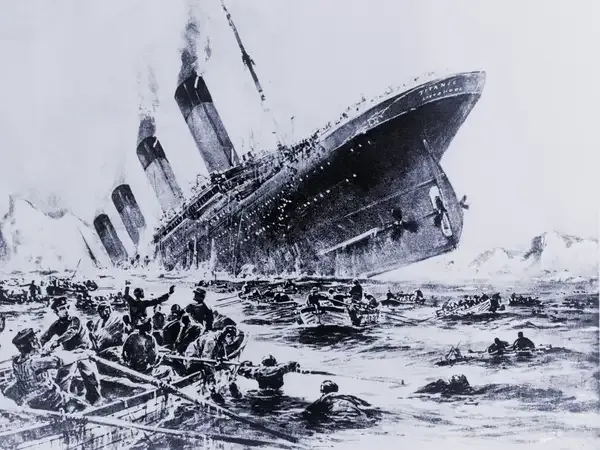Did Anyone Really Think the Titanic was Unsinkable?
The belief that the Titanic was unsinkable is largely a myth that has been exaggerated over time. While some promotional materials and individuals suggested it was exceptionally safe, the idea of it being truly unsinkable was not universally held before its maiden voyage. Shipbuilders and the White Star Line prioritized safety features, but the notion of complete invincibility was not a widespread claim prior to the tragic sinking, which later amplified the lore surrounding the ship's supposed invulnerability.

The Myth of the Unsinkable Titanic
The RMS Titanic, launched in 1912, was widely regarded as a marvel of modern engineering. With its luxurious amenities and advanced safety features, many believed it was unsinkable. But did anyone truly think the Titanic was invulnerable to disaster? This question delves into the misconceptions surrounding the Titanic and the factors that contributed to its infamous fate.
Public Perception and Media Hype
From the outset, the Titanic was marketed as a symbol of safety and luxury. The media played a significant role in shaping public perception. Newspapers and magazines of the era touted the ship's advanced design and safety features, which led many to believe it was an unsinkable vessel. The phrase "God Himself could not sink this ship" became associated with the Titanic, although there is no solid evidence that it was ever officially stated by anyone involved with the ship.
However, this perception was primarily a combination of marketing tactics and a general lack of understanding about maritime safety at the time. The Titanic was indeed equipped with advanced safety features, such as watertight compartments and electronically operated watertight doors, but these innovations were not foolproof. The ship could still be compromised under certain conditions, which many did not fully appreciate.
Engineering Limitations
While the Titanic was a technological marvel, it was not without its limitations. The ship was designed with a total of 16 watertight compartments, which could be sealed off in the event of a breach. However, the design did not account for the possibility of multiple compartments being breached simultaneously. When the Titanic struck an iceberg, five compartments were breached, leading to its tragic sinking.
Moreover, the materials used in the construction of the Titanic, including iron rivets, raised concerns among some engineers. There were reports that the rivets could become brittle in cold waters, which could compromise the ship's integrity. Despite these warnings, the construction proceeded, and the Titanic set sail with an overconfidence that would ultimately lead to disaster.
The Role of Human Error
Another critical aspect of the Titanic's sinking was human error. The ship's captain, Edward Smith, and the crew were aware of icebergs in the area but failed to take adequate precautions. On the night of the disaster, the ship was traveling at near maximum speed, which was considered reckless given the conditions. The crew received several iceberg warnings but did not alter their course significantly.
This overconfidence in the Titanic's capabilities contributed to the tragedy. The belief that the ship was unsinkable may have led to complacency among the crew and passengers alike. Had they approached the night with a sense of caution rather than certainty, the outcome might have been different.
Changing Attitudes Post-Titanic
The sinking of the Titanic in April 1912 marked a turning point in maritime safety. The tragedy exposed the flaws in existing safety regulations and sparked significant changes in how ships were designed and operated. The International Convention for the Safety of Life at Sea (SOLAS) was established in response to the disaster, leading to stricter safety measures, including lifeboat requirements and improved communication protocols.
In the aftermath, the myth of the Titanic's unsinkability was thoroughly debunked. The disaster served as a reminder that no vessel is truly unsinkable, and safety must always be a top priority. The lessons learned from the Titanic have shaped maritime practices ever since, emphasizing the importance of a cautious approach to navigation and safety.
Conclusion: The Legacy of the Titanic
Despite the Titanic's tragic fate, its legacy continues to captivate the imagination of people around the world. The ship’s story serves as a powerful reminder of the dangers of hubris and the importance of acknowledging human limitations. The belief that the Titanic was unsinkable was not only a marketing ploy but also a reflection of the era's overconfidence in technology.
As we reflect on the Titanic's story, it is essential to recognize that the lessons learned from this tragedy are still relevant today. In an age where technological advancements continue to evolve, the balance between innovation and safety remains crucial. The Titanic may have been a marvel of its time, but it also stands as a cautionary tale of the perils of overconfidence in the face of nature's forces.
Key Takeaways
| Aspect | Details |
|---|---|
| Public Perception | The Titanic was marketed as unsinkable, influenced by media hype. |
| Engineering Limitations | Watertight compartments could fail under specific conditions. |
| Human Error | Crew's overconfidence led to reckless navigation decisions. |
| Post-Titanic Changes | Introduced stricter maritime safety regulations. |
Ultimately, the Titanic will forever be remembered not as an unsinkable ship, but as a poignant reminder of our need for vigilance and respect for the sea.












